The Temple of Amun: A Spiritual Oasis in the Desert

In the heart of modern-day Sudan, a small mountain known as Jebel Barkal stands as a testament to the ancient world’s spiritual and cultural intertwining. Here, the majestic Temple of Amun, erected during the reign of Ramses II, bears witness to the profound religious syncretism that flourished between the mighty civilizations of Egypt and Kush.
Amun’s Dwelling: A Convergence of Beliefs
During the New Kingdom of Egypt, Pharaoh Thutmose III recognized Jebel Barkal as the dwelling place of Amun, the revered Egyptian deity. This association transformed the site into a sacred epicenter, intrinsically linking it to the Karnak Temple in Thebes, the primary cult center of Amun. Thus, Jebel Barkal became a nexus of spiritual significance, where the religious practices of Egypt and Kush intertwined.
Architectural Splendor: A Fusion of Cultures
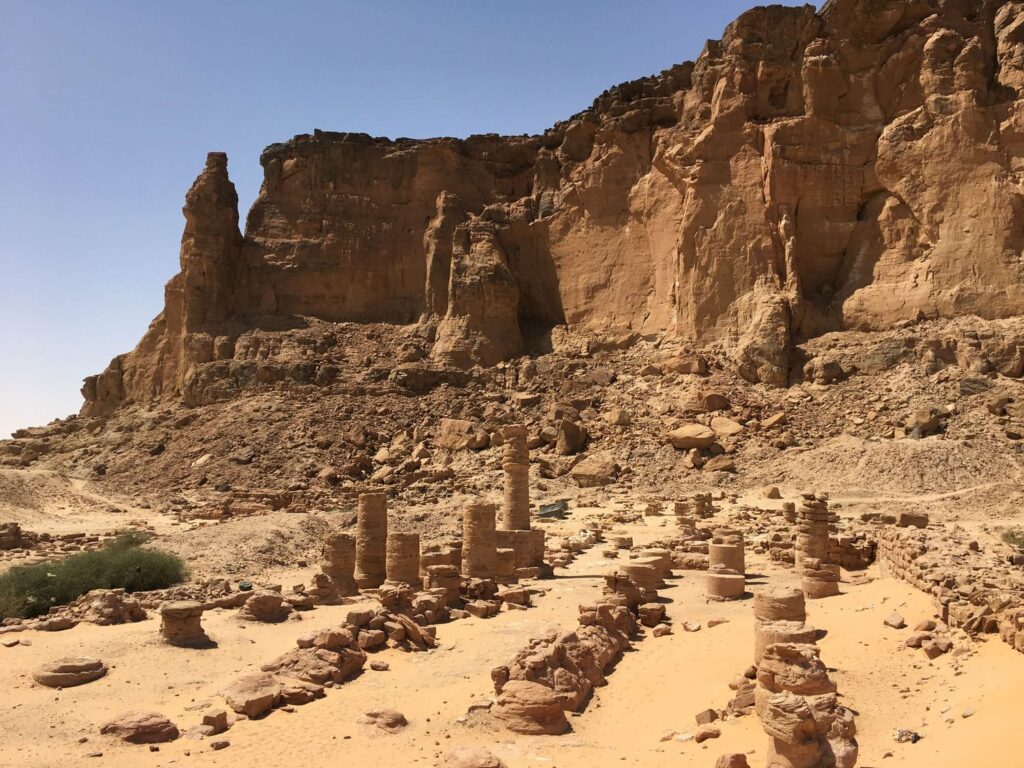
The Temple of Amun at Jebel Barkal is a true masterpiece, seamlessly blending Egyptian and Kushite architectural styles. Its pillared halls, intricate carvings, and colossal statues bear testament to the artistic prowess and craftsmanship of ancient artisans. The temple walls depict pharaohs making offerings to the gods, symbolizing the divine rights of kings and the profound bond between religion and governance.
Unearthing Ancient Secrets
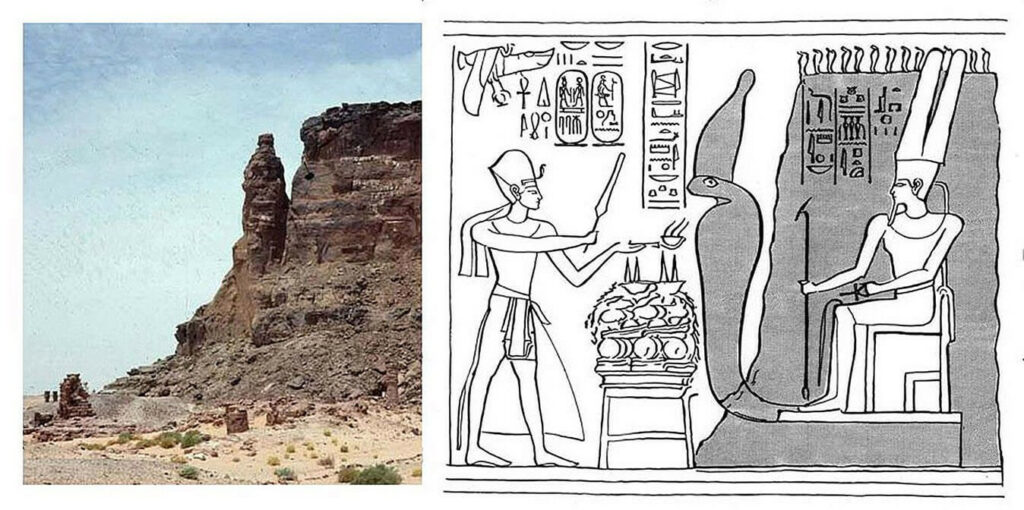
Excavations at Jebel Barkal have yielded a wealth of artifacts, including statues, stelae, and inscriptions, offering invaluable insights into the religious practices, art, and politics of the era. These findings not only showcase the skill of ancient artisans but also unveil the rich tapestry of cultural exchange between Egypt and Kush.
Echoes of Jebel Barkal at Abu Simbel
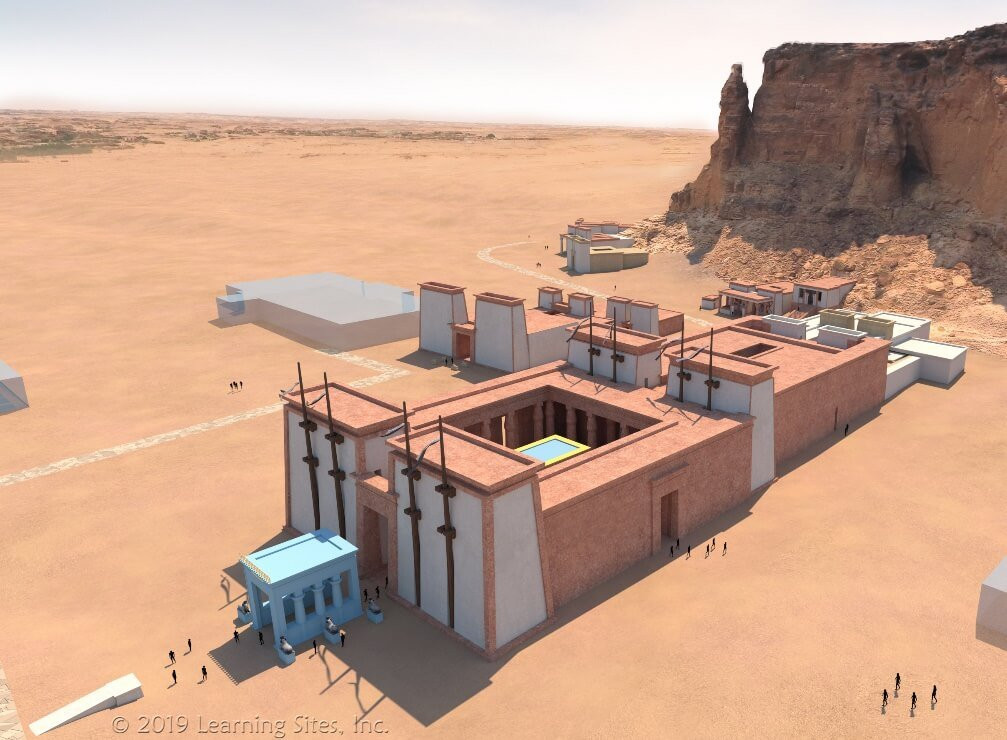
The significance of Jebel Barkal resonates even at the monumental Abu Simbel temple complex in Egypt. Here, the sacred mountain is depicted as the abode of Amun of Karnak, with its pinnacle represented as a colossal royal uraeus, adorned with the White Crown – a symbol of pharaonic authority and divine protection.
A Confluence of Cultures: Egyptian-Kushite Religious Syncretism
Merging Beliefs and Rituals
From around 2000 BCE, as Kush emerged as a significant power, a gradual blending of religious practices and deities occurred between Egypt and Kush. This syncretism was not merely an adoption of Egyptian gods by the Kushites but rather a mutual exchange and reinterpretation of religious ideas and rituals.
The Kushite Interpretation: Adapting and Merging
The Kushite interpretation of Egyptian deities often involved merging them with native Kushite gods or adapting their characteristics to fit local beliefs. For instance, the Egyptian god Amun was assimilated with the Kushite god Apedemak, resulting in a unique form of worship that was distinctly Kushite while retaining Egyptian influences.
Artistic Expression: A Harmonious Blend
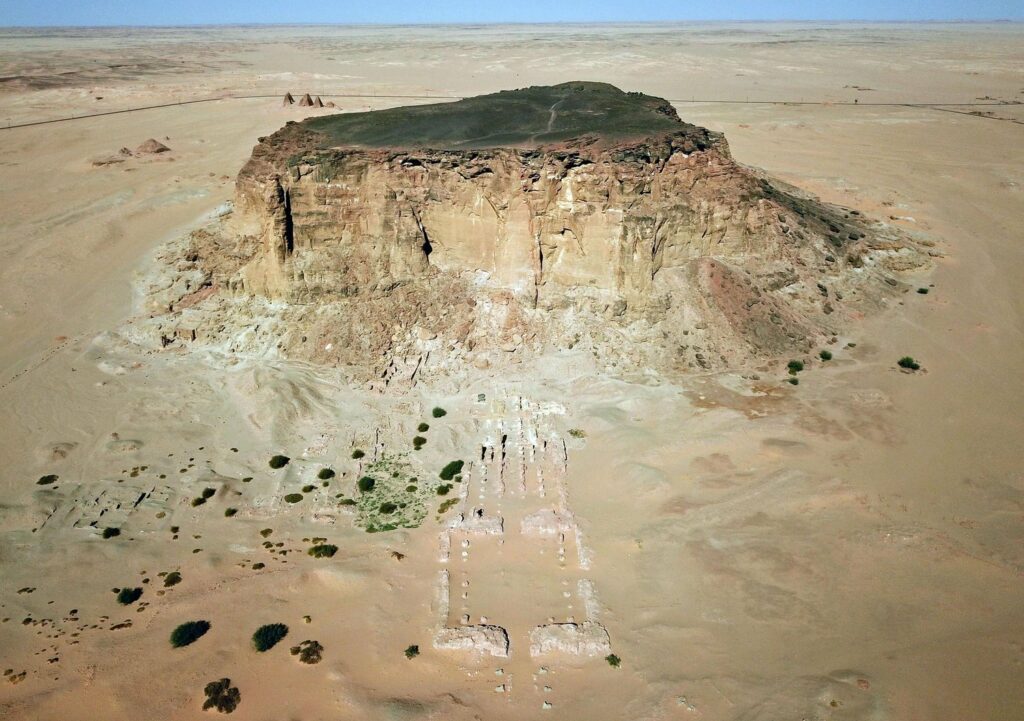
This hybridization of religious beliefs is evident in the art and architecture of the period, where Egyptian styles blend seamlessly with indigenous Kushite elements, creating a distinct cultural identity. The temples, such as those at Jebel Barkal, became symbols of this intertwined relationship.
Political and Social Implications
The religious syncretism between Egypt and Kush had profound implications for the political and social structures of both civilizations. In Egypt, the Kushite pharaohs of the 25th Dynasty embraced Egyptian religious traditions, legitimizing their reign, while in Kush, the adoption of Egyptian practices enhanced the authority and divine status of Kushite kings. This mutual influence fostered a shared identity and cultural unity, facilitating diplomatic and trade relationships.
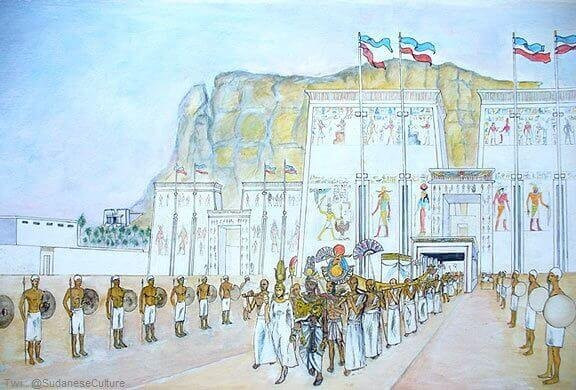
As the sun sets over Jebel Barkal, the ancient stones whisper tales of a time when cultures converged, beliefs merged, and the divine and the temporal intersected in profound ways. This sacred mountain stands as a testament to the enduring spirit of cultural exchange and the timeless pursuit of spiritual enlightenment.

